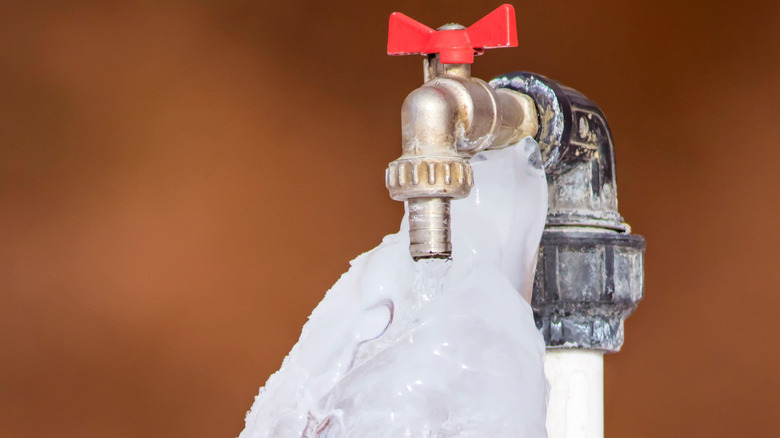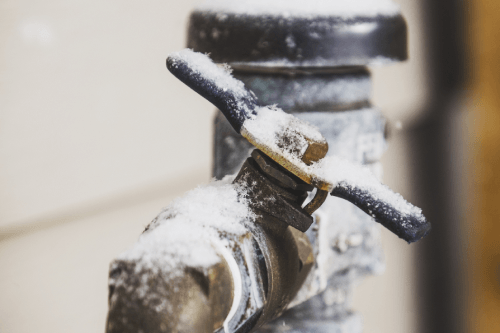Just how do you really feel about Helpful Tips to Prevent Frozen Pipes this Winter?

Cold weather can wreak havoc on your pipes, particularly by freezing pipes. Here's just how to stop it from taking place and what to do if it does.
Intro
As temperatures decrease, the threat of icy pipes boosts, possibly causing costly fixings and water damage. Recognizing exactly how to stop icy pipelines is essential for property owners in chilly climates.
Avoidance Tips
Shielding at risk pipes
Cover pipes in insulation sleeves or utilize heat tape to safeguard them from freezing temperatures. Focus on pipes in unheated or external areas of the home.
Heating strategies
Maintain indoor rooms effectively warmed, specifically locations with plumbing. Open up closet doors to allow cozy air to circulate around pipelines under sinks.
Just how to determine icy pipelines
Try to find decreased water circulation from faucets, uncommon odors or sounds from pipes, and visible frost on revealed pipes.
Long-Term Solutions
Architectural changes
Think about rerouting pipelines far from outside wall surfaces or unheated locations. Add extra insulation to attic rooms, basements, and crawl spaces.
Updating insulation
Purchase high-grade insulation for pipes, attics, and walls. Correct insulation helps maintain regular temperature levels and reduces the threat of frozen pipelines.
Shielding Outdoor Plumbing
Yard tubes and outdoor taps
Separate and drain pipes yard hoses before winter. Mount frost-proof faucets or cover exterior faucets with shielded caps.
Comprehending Frozen Pipelines
What triggers pipes to freeze?
Pipelines freeze when revealed to temperature levels below 32 ° F (0 ° C) for expanded durations. As water inside the pipelines ices up, it broadens, putting pressure on the pipe wall surfaces and possibly causing them to rupture.
Threats and damages
Icy pipes can result in water system interruptions, building damage, and expensive repair work. Ruptured pipes can flooding homes and create comprehensive structural damages.
Signs of Frozen Pipeline
Recognizing frozen pipes early can prevent them from rupturing.
What to Do If Your Pipes Freeze
Immediate activities to take
If you presume frozen pipelines, keep taps open up to ease stress as the ice melts. Use a hairdryer or towels soaked in hot water to thaw pipelines gradually.
Conclusion
Stopping frozen pipelines requires proactive procedures and fast actions. By comprehending the reasons, indications, and preventive measures, home owners can protect their plumbing throughout winter.
5 Ways to Prevent Frozen Pipes
Drain Outdoor Faucets and Disconnect Hoses
First, close the shut-off valve that controls the flow of water in the pipe to your outdoor faucet. Then, head outside to disconnect and drain your hose and open the outdoor faucet to allow the water to completely drain out of the line. Turn off the faucet when done. Finally, head back to the shut-off valve and drain the remaining water inside the pipe into a bucket or container. Additionally, if you have a home irrigation system, you should consider hiring an expert to clear the system of water each year.
Insulate Pipes
One of the best and most cost-effective methods for preventing frozen water pipes is to wrap your pipes with insulation. This is especially important for areas in your home that aren’t exposed to heat, such as an attic. We suggest using foam sleeves, which can typically be found at your local hardware store.
Keep Heat Running at 65
Your pipes are located inside your walls, and the temperature there is much colder than the rest of the house. To prevent your pipes from freezing, The Insurance Information Institute suggests that you keep your home heated to at least 65 degrees, even when traveling. You may want to invest in smart devices that can keep an eye on the temperature in your home while you’re away.
Leave Water Dripping
Moving water — even a small trickle — can prevent ice from forming inside your pipes. When freezing temps are imminent, start a drip of water from all faucets that serve exposed pipes. Leaving a few faucets running will also help relieve pressure inside the pipes and help prevent a rupture if the water inside freezes.
Open Cupboard Doors
Warm your kitchen and bathroom pipes by opening cupboards and vanities. You should also leave your interior doors ajar to help warm air circulate evenly throughout your home.

We are very serious about How To Avoid Freezing Pipes and I really hope you enjoyed reading the entire blog posting. Are you aware of somebody else who is excited about How to prepare your home plumbing for winter weather? Take a moment to promote it. Thank you for taking the time to read it.
Check It Out